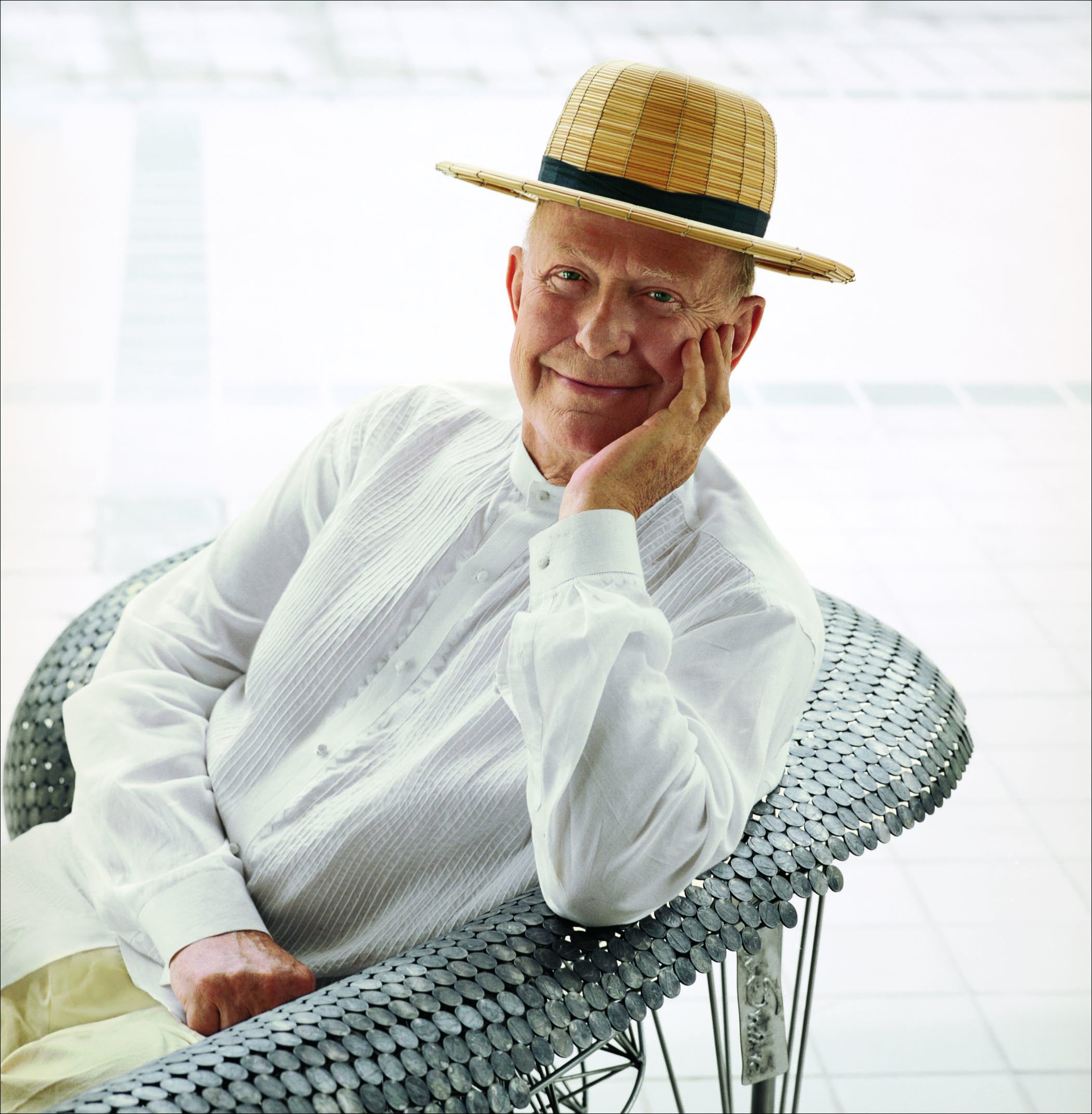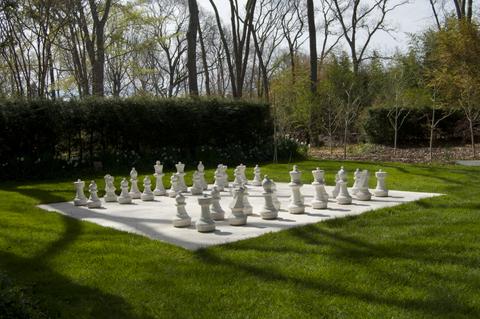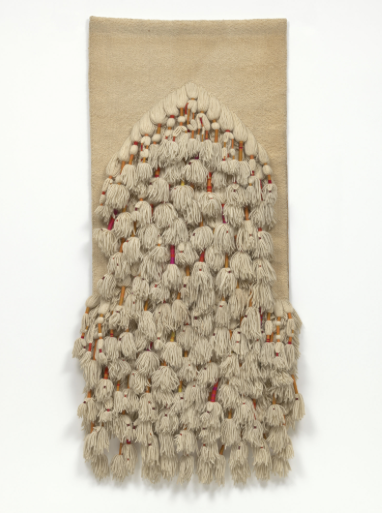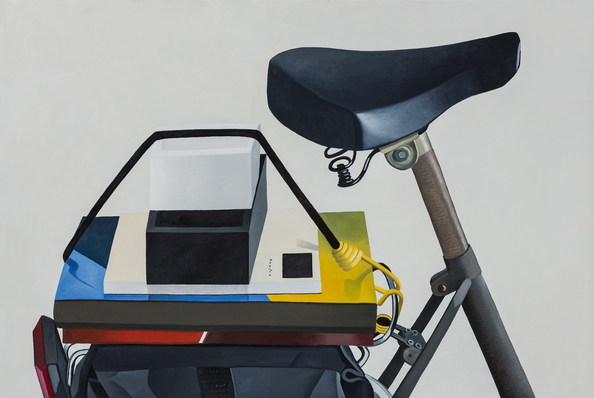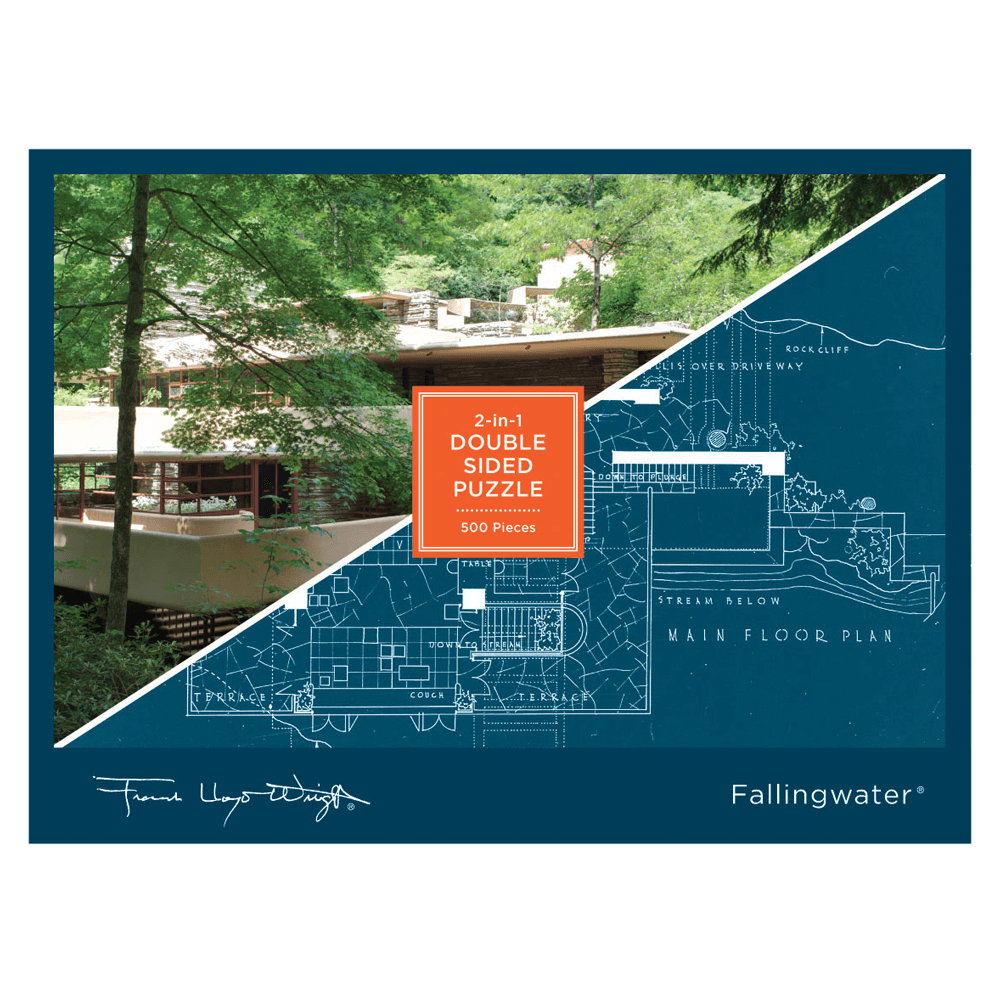We’ve been celebrating our 30th Anniversary by posting blogs commemorating other milestones in the art world (Frank Lloyd Wright after 150 years; 30 Years of Contemporary Japanese Basketmaking; 10 Years of Feminist Art in Brooklyn), next up we have Jack Larsen at 90. An international textile designer, author and collector, Larsen has long played an influential role in textile arts and has been an important mentor and supporter of browngrotta arts.
Born and raised in Seattle, Larsen spent much of his childhood surrounded by nature of the Pacific North-West. In 1945, Larsen began studying at the School of Architecture at the University of Washington, where he developed an interest in weaving. Larsen then focused his full attention on weaving, enveloping himself in the Los Angeles art and design scene. Larsen’s desire to work in textiles grew and he enrolled himself in the Cranbrook Academy of Art in Bloomfield Hills, Michigan. In order to break into the design scene, Larsen and fellow Cranbrook students traveled to New York hoping to make some connections. “It was sort of a game—how many people would interview me,” he has written about this trip,”—but the only job I would have taken at the time, happily, was with Knoll. But “Shu” [Florence] Knoll said I was too much of an individual to fit into their mold, which was partly true. My colors were very different; my colors were earthy.” Instead of working for another company, Larsen started his own in 1951. “By the late 1950s, architects were buying my fabric for Knoll furniture in order to get something that wasn’t red, yellow, or electric blue.”

Jack Lenor Larsen at 90: Transformations by a Textile Innovator at The Goldstein Museum of Design. Photo: Taylor Barker
For over 60 years Larsen and his company Jack Lenor Larsen Inc. have designed fabrics for public buildings, corporate offices, Pan American and Braniff Airlines, the Phoenix Performing Arts Center, and Air Force One and collaborate with Frank Lloyd Wright, just to name a few. The “Larsen Look” characterized by Larsen’s award-winning hand-woven fabrics of natural yarn is synonymous with 20th-century design at its pinnacle. Larsen has spent much of his life traveling the world to unearth new patterns and techniques. His travels and passion for global design made him familiar with ikat and batik, two techniques which he introduced them to the American public. Larsen has won many awards, including the Lifetime Achievement Award from the American Crafts Museum in 200and the Smithsonian’s Archives of American Art Medal in 2009. Furthermore, Larsen is one of only four Americans to ever be honored with an exhibition in the Palais du Louvre in Paris.
You can see highlights of his remarkable career in Minneapolis through January 7th. The Goldstein Museum of Design opened Jack Lenor Larsen at 90: Transformations by a Textile Innovator, an exhibition celebrating Larsen’s 90th Birthday through his many innovations. The 70 textiles in the exhibition exemplify Larsen’s mastery of craft techniques, technological innovation and inspiration drawn from global design. The exhibition also includes correspondence, drawing and production samples to give viewers a better understanding of Larsen’s creative processes. Jack Lenor Larsen at 90 can be viewed in Gallery 241 at The Goldstein Museum of Design for free. For more information about the exhibition click HERE.
In 1992, Larsen completed his East Hampton, NY estate “Longhouse Reserve.” Spanning 16 acres, the estate boasts an expansive sculpture garden with work by Yoko Ono, William de Kooning and Sol LeWitt, among others. While Larsen’s home on Longhouse Reserve remains private, his sculpture garden is open to the public throughout the summer months. “I built the LongHouse gardens to share. I think seeing in three dimensions is so contagious,” explains Larsen. This past summer, Larsen used his 90th birthday to acquire works for the Longhouse collection. The benefit attracted artists, architects, designers and politicians. Guests were treated to performances by multi-instrumentalist Gian Carlo Feleppa on sitar, Mohsen Namjoo, an Iranian singer and sitar player and the synchronized swimmers The Brooklyn Peaches.

Damask Waterfall, Ed Rossbach, cotton welting cord, commercial fabric, plastic, satin damask, wrapped, 36″ x 36″, 1977
In addition to his design success, Larsen has authored an array of landmark publications including Elements of Weaving (1967), The Dyer’s Art: Ikat, Batik, Plangi (1971), Beyond Craft: The Art Fabric (1972), Fabric for Interiors (1975), The Art Fabric: Mainstream (1981), Interlacing: The Elemental Fabric (1986), Material Wealth: Living with Luxurious Fabrics (1989), The Tactile Vessel: New Basket Forms (1989), A Weaver’s Memoir (1998), Jack Lenor Larsen: Creator & Collector (2004) exhibition catalog and Learning from Longhouse (2010).
Larsen has been a generous friend to browngrotta arts, selecting browngrotta as the Best Booth at SOFA, NY one year and Sue Lawty as Best Artist. Browngrotta arts also worked with Longhouse Reserve in collaboration with an Ed Rossbach Special Exhibition at SOFA Chicago years ago.Larsen wrote the introduction to our monograph: Ethel Stein: Weaver and contributed to 25 for the 25th.

